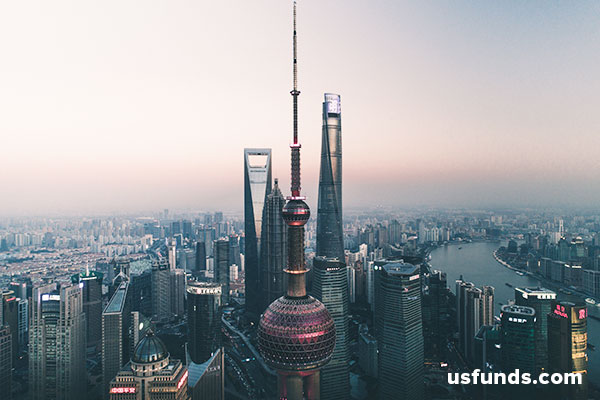by Kristina Hooper, Global Market Strategist, Invesco Ltd., Invesco Canada
Last week brought bad news on trade and Brexit, yet stocks globally shrugged off the news and rose higher. In the U.S., the S&P 500 Index hit new highs (albeit on low breadth), while the yield on the 10-year Treasury bond surpassed the key 3% level.1 Because the 10-year U.S. Treasury yield tends to be a far more accurate fear gauge than any equity indicators (such as the VIX), I can’t help but be fixated on a few questions: Why did the 10-year yield rise? And where will it go from here?
Forces that affect the 10-year yield
To understand why the yield rose, it’s important to understand what forces impact the 10-year yield. It is widely viewed that the three determinants of the 10-year yield are growth expectations, inflation expectations and the term premium.
Simply put, term premium is defined as the excess yield that investors require to commit to holding a long-term bond rather than holding a series of shorter-term bonds. In a research note in 2007, the Federal Reserve Bank of San Francisco explained that “a key component of the term premium is investor expectations about the future course of short-term interest rates over the lifetime of the long-term bond.”2 And that, of course, is dependent on expectations about the economy in the future. That’s why a rise in the 10-year yield versus shorter-term Treasuries is usually viewed as positive, as it suggests investors are more optimistic about the future of the economy.
But “term premium” is a catch all category dictated by supply and demand. And supply and demand is impacted by central bank selling and new debt issuance, as well as the fear trade and the yield trade, as I have articulated in previous blogs.
The “fear trade”
Let me focus in on the fear trade. Typically, as investors have become worried about macroeconomic and market conditions, their “safe haven” asset of choice has increasingly become U.S. Treasuries. When demand for Treasuries increases, yields go down, all else being equal. And last week saw many developments that I believe should have caused worry among investors:
- U.S.-China trade tensions increased, with China rewarding other trading partners with lower tariffs as it worked to alienate the U.S. in their dispute. In my view, this was a smart decision that showed China is playing chess while the U.S. is playing checkers when it comes to trade.
- At a critical meeting of the 27 European Union (EU) member countries, UK Prime Minister Theresa May’s Chequers plan (which outlined terms for the UK’s post-Brexit relationship with the EU) was rejected. She is now coming under increasing pressure from within the UK, and a no-deal Brexit seems increasingly likely.
- Italy’s government must decide on a budget by September 27, but as I have been saying, it must reconcile the competing interests of its coalition government and the EU’s mandate for fiscal discipline.
And so it seems surprising that in a week of significant disruption and macro worries, investors bought more risk assets and had less demand for perceived safe haven assets such as Treasuries.
Concerns about inflation are rising
When I examine the recent rise in the 10-year yield, especially given other recent developments such as the escalation in trade wars, I believe it can be attributed to an increase in inflation expectations. And so, while investors are celebrating stock market returns and a steepening of the yield curve (which arguably suggests we are further away from a recession), I am concerned because inflation caused by tariffs would not be a positive development for any economy, let alone the U.S. economy, in my view.
From my perspective, market activity in the last week does seem to suggest that investors are at least beginning to understand that trade wars may be a likely reality — and that the U.S. may not come out on top. I believe this understanding is reflected in the rise in the inflation expectations component of the 10-year U.S. Treasury yield, the recent weakening of the U.S. dollar, and the performance of Chinese stocks last week. The Shanghai Stock Exchange Composite Index rose more than 4% last week after being beaten down for much of 2018.3
Looking ahead
There is so much on the docket in the coming days:
- A possible U.S. government shutdown looms large as this week the House must pass a major bill that includes both defense and domestic spending for the coming months. President Donald Trump has vowed to veto the bill as it falls far short of his $5 billion request for building a wall along the U.S.-Mexico border. I believe the U.S. will be able to narrowly avoid a shutdown, but this is likely to be a nail-biter.
- The deadline of September 30 is approaching for the U.S. and Canada to agree on revisions to the North American Free Trade Agreement. I think it is unlikely that the deadline will be met, although I wouldn’t be surprised to see some kind of extension of that deadline.
- Trade tensions are likely to continue to simmer or even escalate in the wake of China’s cancellation of trade talks scheduled for this week.
Most importantly, the U.S. Federal Reserve (Fed) meets this coming week. I believe it is a fait accompli that the fed funds rate will rise to the 200-225 basis point range. What I will be looking for are signs of concern about tariffs and other reasons why the Fed may not raise rates again in 2018 – or signs that the Fed is becoming increasingly worried about inflation, which of course may force it to raise rates again in December.
In my view, recent developments are an important reminder of the importance of maintaining an inflation-protection component in an investment portfolio, given that inflation often rises when it’s not expected. There are a variety of asset classes that may offer some level of inflation protection, including inflation-protected securities, real estate, commodities and gold.
This post was originally published at Invesco Canada Blog
Copyright © Invesco Canada Blog














